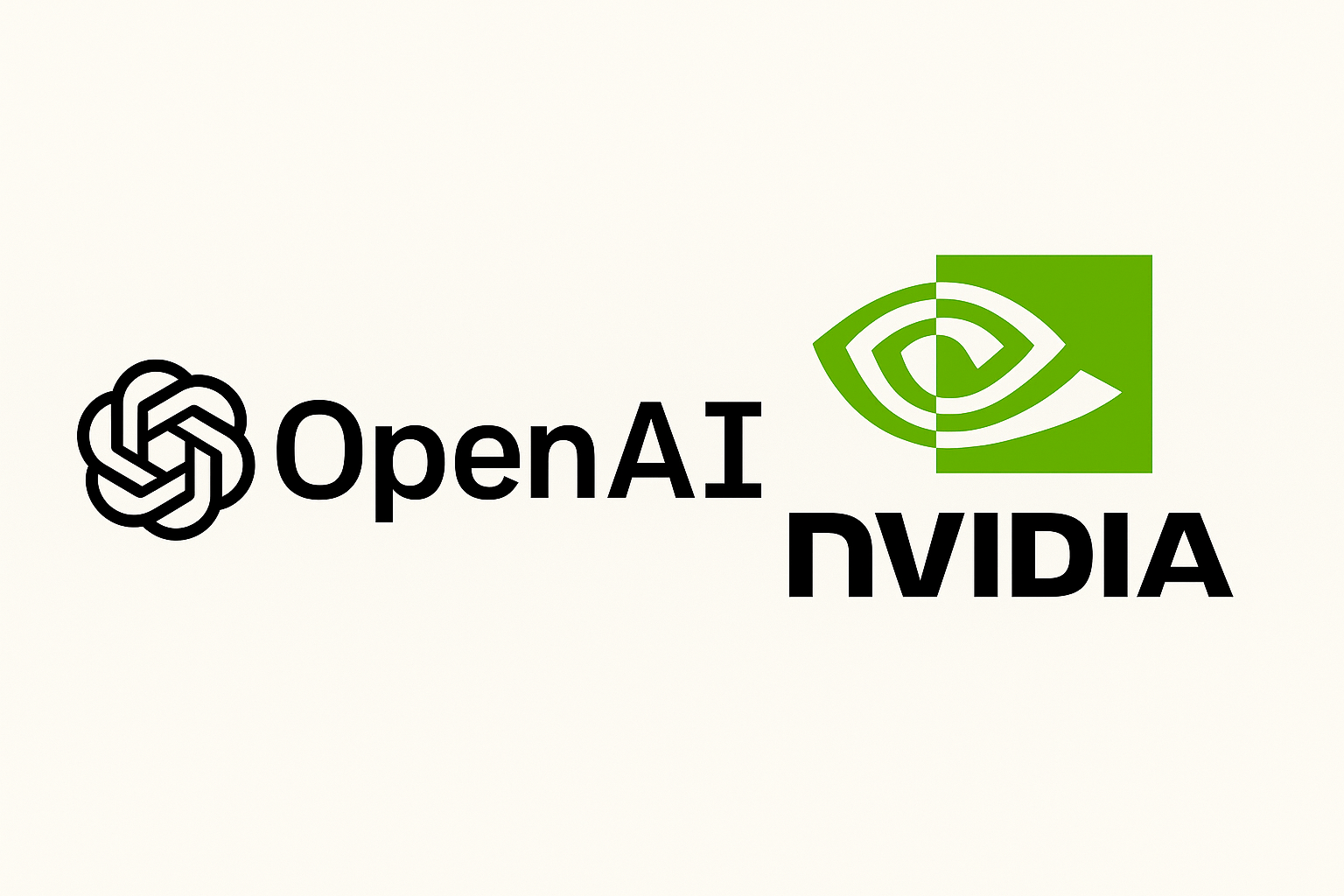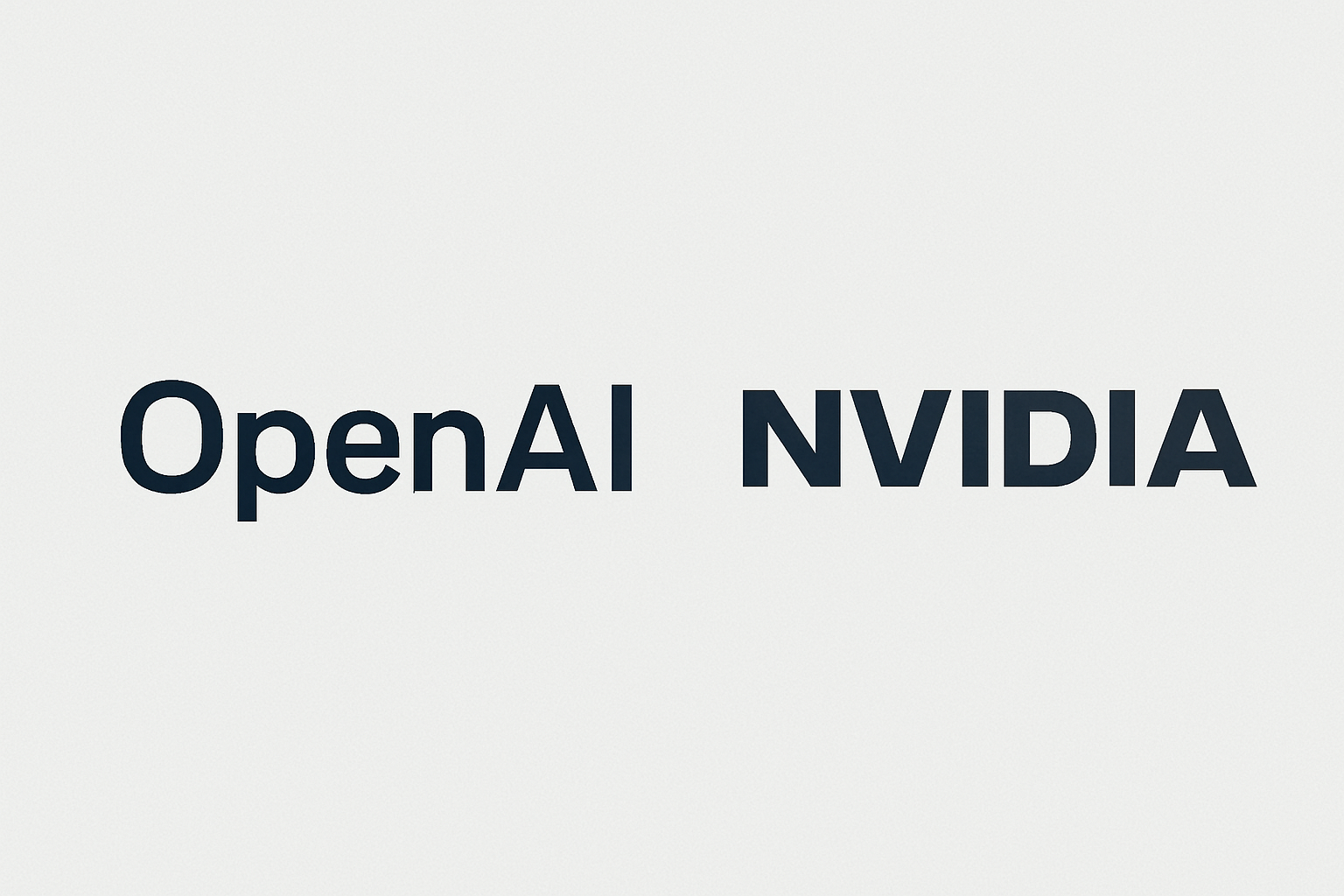Background
OpenAI is one of the leading organizations in AI research and applications, with major products like ChatGPT, large language models (LLMs) supporting multimodal reasoning, story agents, and more. NVIDIA is the global leader in GPU hardware, AI compute systems, and supporting software (drivers, CUDA, AI libraries, etc.).
As the demand for computing power in AI grows — larger models, faster inference, lower latency, higher accuracy, and multimodal data processing — AI infrastructure (data centers, energy supply, hardware and software) has become a critical bottleneck.

The Partnership
Based on official announcements, the key points of the OpenAI–NVIDIA collaboration include:
-
Massive Scale: 10 GW of NVIDIA Systems
OpenAI and NVIDIA will deploy at least 10 gigawatts of compute systems — a massive infrastructure requiring millions of GPUs — to support the training and operation of next-generation models. -
Up to $100 Billion Investment
NVIDIA will invest up to $100 billion in OpenAI, tied to milestones: each gigawatt-scale system completed will trigger additional funding. -
First Deployment by Late 2026
The first 1-gigawatt system, built on NVIDIA’s Vera Rubin platform, is expected to come online in the second half of 2026. -
Priority Strategic Partnership
-
NVIDIA has been chosen as OpenAI’s priority partner for compute and networking in its “AI factories.”
-
Both companies will co-optimize roadmaps: OpenAI tuning models and software for NVIDIA hardware, while NVIDIA adapts platforms to OpenAI’s needs.
-
-
Integration with Other Infrastructure Projects
This partnership complements OpenAI’s broader initiatives, including the “Stargate” project with Oracle and SoftBank, and the expansion of global data center capacity.
Achievements & Significance
This collaboration could bring major shifts in the AI industry:
-
Stable compute supply: With 10 GW of compute capacity, OpenAI secures reliable resources for training giant models, reducing dependency on external GPU suppliers.
-
Accelerated AI development: More compute means faster progress toward advanced reasoning, multimodal agents, and real-time AI systems.
-
Competitive advantage: Strengthens OpenAI’s position against rivals (Google, Meta, Anthropic), while reinforcing NVIDIA’s hardware leadership.
-
Economic ripple effects: Building gigawatt-scale data centers requires engineers, technicians, energy experts, and operators, creating thousands of jobs.
-
Software–hardware co-optimization: OpenAI models will run more efficiently on NVIDIA GPUs, reducing costs per compute unit and improving energy efficiency.
Challenges & Risks
Alongside opportunities, challenges remain:
-
Energy demands
10 GW is enormous. Reliable electricity, cooling, bandwidth, and security are essential — otherwise infrastructure bottlenecks will arise. -
High costs
Even with NVIDIA’s funding, construction, power, cooling, and maintenance costs are massive. Profitability depends on keeping expenses under control. -
Deployment complexity
Coordinating hardware, software, and operations at scale is difficult. Any mismatch between OpenAI’s model roadmap and NVIDIA’s hardware roadmap could reduce efficiency. -
Regulatory risks
Governments may scrutinize such large-scale AI deployments for antitrust, data protection, and energy use. -
Environmental concerns
Gigawatt-scale energy use could spark criticism if not paired with renewable energy and sustainable cooling solutions.
Future Outlook
-
Toward Superintelligence: Both companies describe this as a milestone on the road to superintelligence.
-
Global expansion: After the first 1 GW system, more centers could follow across regions and countries.
-
Energy innovation: Emphasis on renewable energy, advanced cooling, and efficiency improvements will be crucial.
-
Cross-industry impact: Healthcare, robotics, automotive, manufacturing, education, and entertainment could all benefit from more powerful AI infrastructure.

Conclusion
The OpenAI–NVIDIA partnership marks a turning point in AI infrastructure. It signals a move from experimental models toward industrial-scale intelligence factories. If successful, the collaboration could accelerate the path to Artificial General Intelligence (AGI) — but its success will depend not only on technology, but also on solving challenges in energy, sustainability, regulation, and long-term vision.